ARCHITECT PETER BLAKE’S
POLLOCK MUSEUM DESIGN, 1949

View looking east to Accabonac Harbor
~~~~~~~~~~~~~~~~~~~~~~~
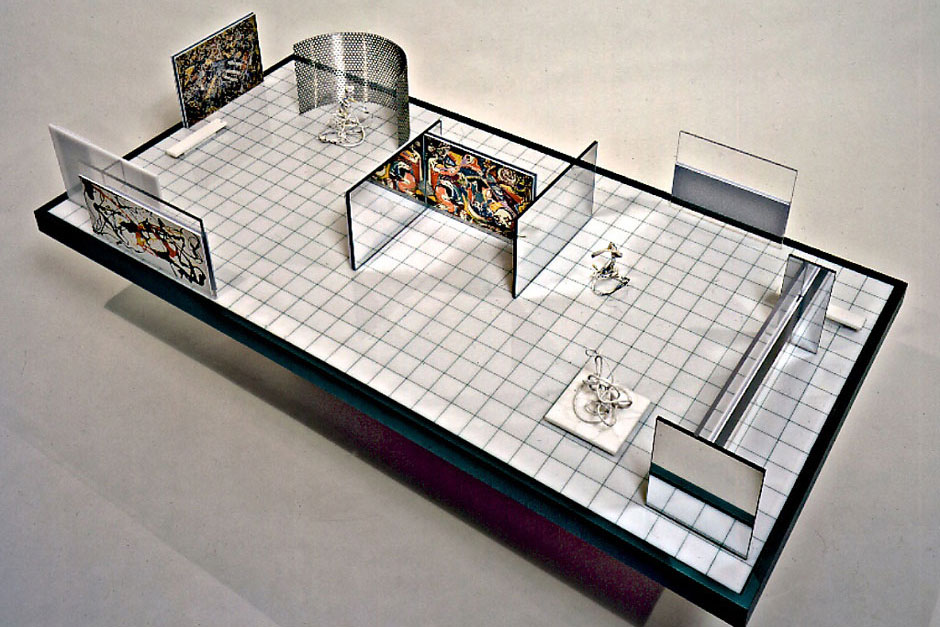
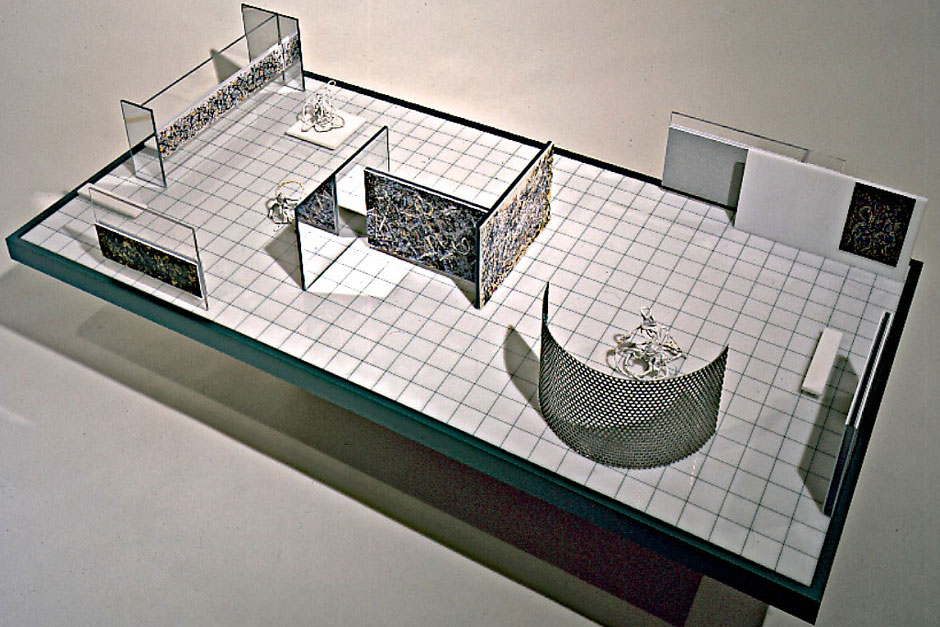
With the frosted glass roof removed, the layout of paintings, mirrored and clear glass walls, and sculptures is evident. As Blake’s concept evolved, he came to see the building as an experiential environment rather than a conventional display space for the artist’s canvases. Had it been built, Pollock would have painted directly on the transparent walls, allowing his imagery to interact visually with the natural surroundings.
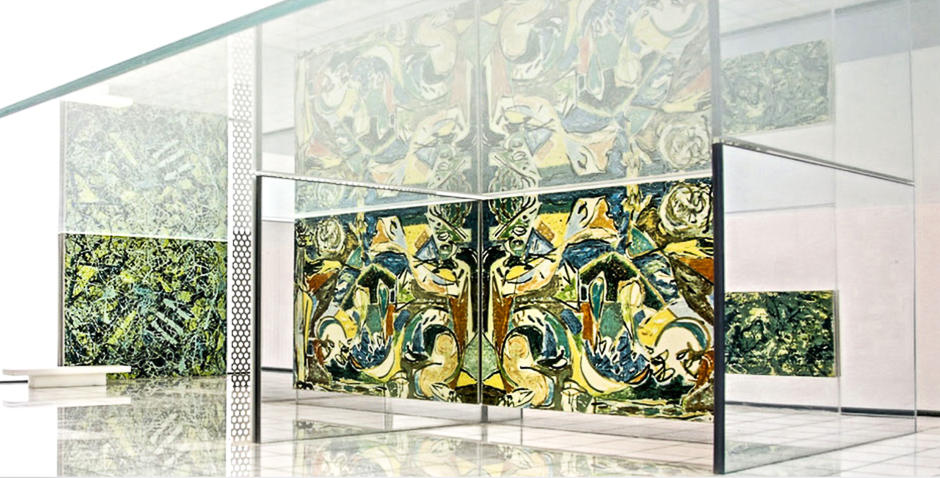
A reproduction of Pollock’s 1946 painting, The Key (Art Institute of Chicago) is reflected in a mirrored wall. On the right, a corner of Number 10, 1949 (Museum of Fine Arts, Boston) is visible. On the left is Number 17A, 1948 (private collection). The 1994-95 model also features reproductions of the three wire and plaster sculptures that Pollock made especially for Blake’s original 1949 model.
—————————-
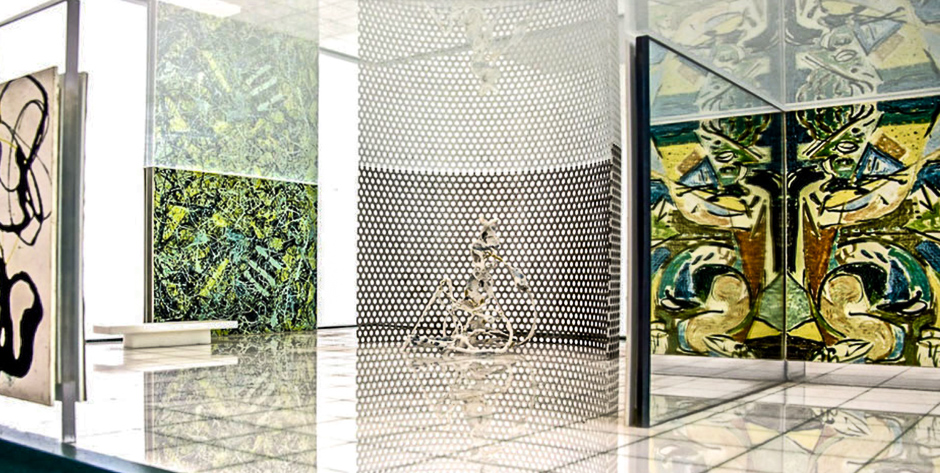
—————————-
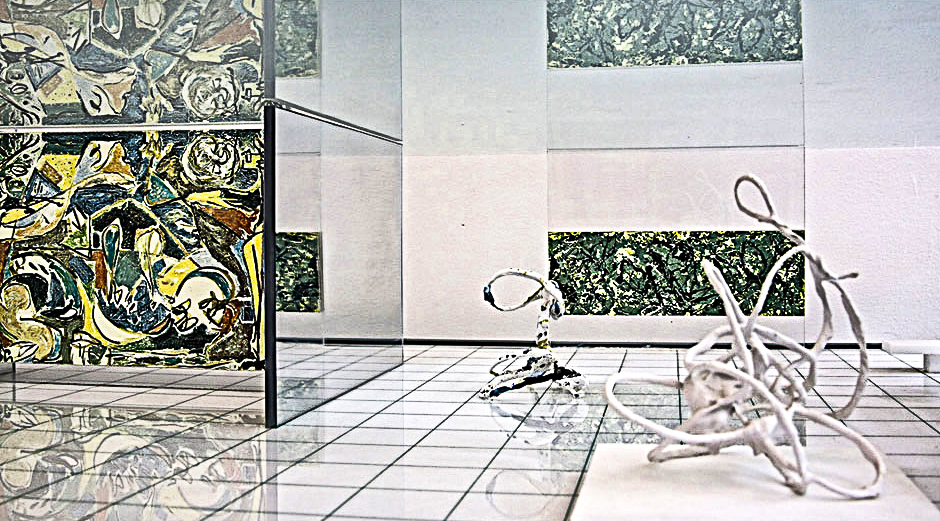
—————————-

At the center of Peter Blake’s “ideal museum” model, a reproduction of Jackson Pollock’s 1946 painting, The Key (Art Institute of Chicago) is reflected in mirrored walls.
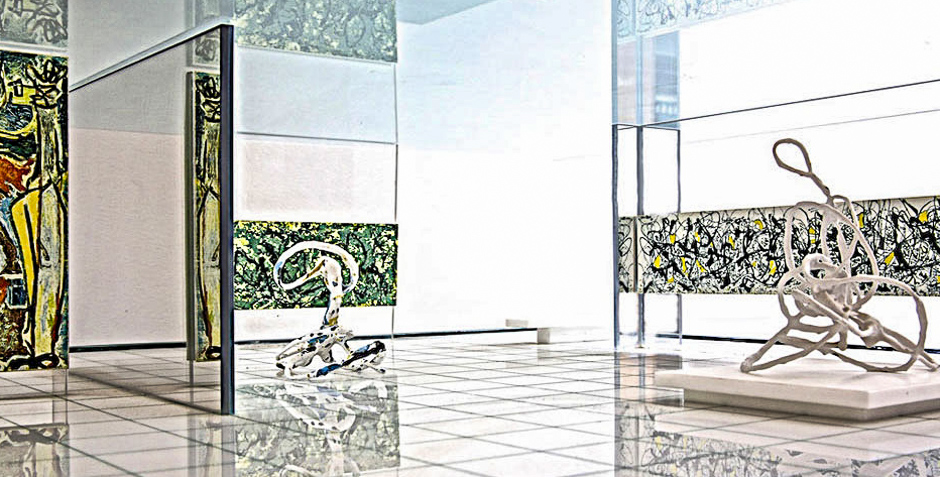
Captions by Helen Harrison. Photos by Jeff Heatley.
